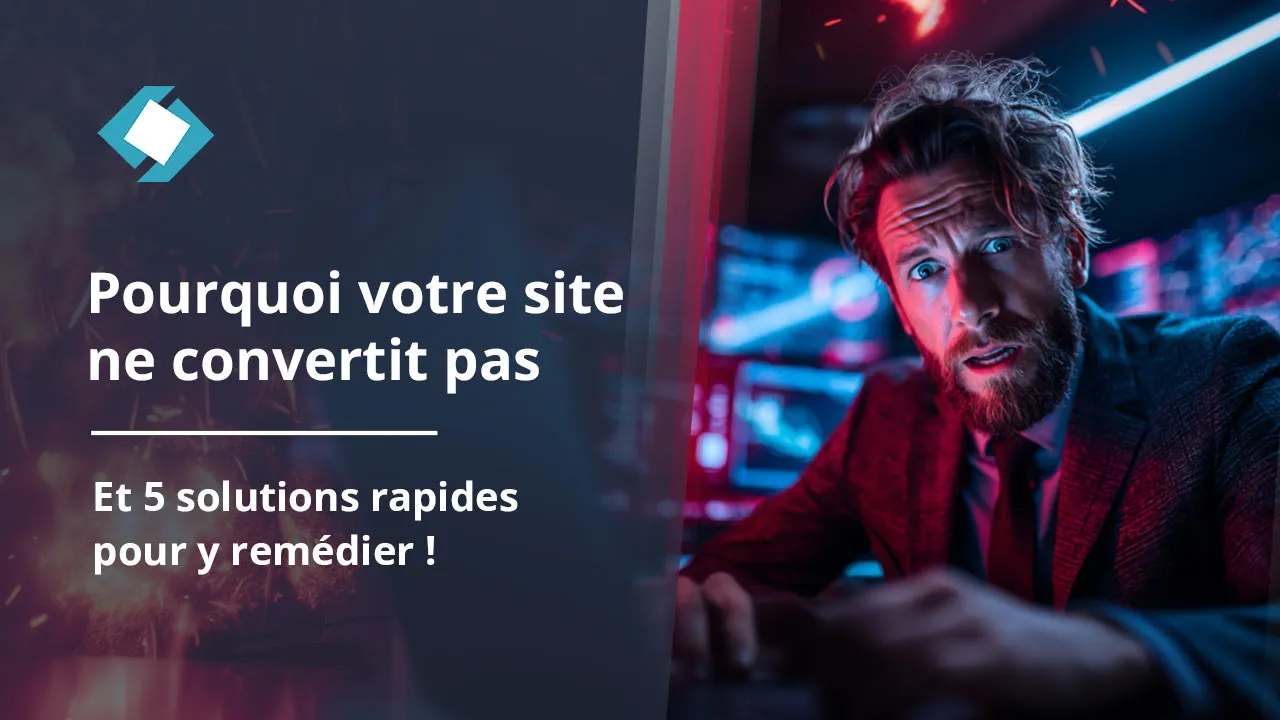$7,500 fine per violation in California. $10,000 penalties in Maryland. $15,000 in Tennessee.
If you put these numbers together, that’s nearly a tower of $100 bills 8 feet high. All fell into state attorney generals’ coffers for the same reason: poor cookie management and privacy law violations.
Here’s the question now racing through your mind: will your small business be next on the list?
Because let’s be clear: US privacy laws are no longer optional. And cookies aren’t either. Every visitor to your site = personal data. Every click = a legal obligation. But relax. After 15 years helping SMEs with their digital transformation, I’ll explain all this in plain English with concrete actions.
Promise: By the end of this article, you’ll know exactly what to do to protect your business, without going broke or becoming a lawyer.
US Privacy Laws and Cookies: Why Your SME Can No Longer Ignore This
The 2025 Numbers That Make You Think
Here’s what’s really happening in the US:
- 18 states will enforce comprehensive privacy laws in 2025
- $150+ million in potential fines across all state laws combined
- 70% of e-commerce sites still non-compliant with state privacy requirements
- Only 1 in 8 websites properly handles cookie consent for US visitors
But here’s the trap! Most business owners think: “We’re too small, they won’t come after us”. Wrong.
Nebraska and Texas laws apply to any business that’s not federally classified as “small” (under 500 employees). California’s CCPA targets companies with just $25.6 million annual revenue. Even Montana requires compliance from businesses processing 50,000+ consumers’ data.
Why This Topic Is Exploding Right Now
My analysis reveals three factors:
First, state attorneys general have much more efficient monitoring tools. They can automatically detect non-compliant sites and trigger targeted investigations.
Second, consumers are increasingly privacy-aware. 81% say they won’t return to a site after a data breach. That’s your reputation on the line.
Third, most states have created simplified penalty procedures specifically to sanction SMEs more easily. No more excuses.
The 4 Golden Rules of US Privacy Cookie Compliance for SMEs
What if we changed our approach? Instead of suffering privacy laws as a constraint, let’s use them as a competitive advantage. Here’s how.
Rule 1: Total Transparency (Your Best Commercial Asset)
Compliant businesses see their conversion rates increase by 15% according to recent studies. Why? Trust = sales.
What does this look like in practice?
Your cookie banner must offer two equal-sized buttons: “Accept All” AND “Reject All”. Gone are the tiny “Reject” buttons hidden in a corner. California’s CPPA checks this first.
Your privacy policy must explain in simple English:
- What data you collect (email, address, browsing history)
- Why you use it (order fulfillment, newsletters, site improvement)
- How long you keep it (13 months max for marketing cookies)
Rule 2: Smart Consent Management
Here’s where it gets interesting. State privacy agencies conduct surprise audits on websites. Their first test? Landing on your site and seeing if marketing cookies deploy before consent.
If they do, it’s a direct fine.
The solution? Configure your site so NO non-essential cookies deploy until the user clicks “Accept.” Google Analytics, Facebook Pixel, chat tools… everything must wait for the green light.
Rule 3: Documentation That Saves You
63% of SME owners can’t prove they obtained valid consent. Fatal error.
Your consent log must track:
- Who gave consent (anonymized IP + timestamp)
- For which specific cookies
- When consent can be withdrawn (mandatory!)
Tools like Axeptio, Cookiebot, or OneTrust do this automatically. Budget $50-150/month depending on your traffic.
Rule 4: Security Without Paranoia
If you have user data, you must secure it properly. Anyway, cybersecurity is mandatory in IT. Better to be a bit too paranoid than not enough. My expert advice after 15 years in digital: focus on fundamentals before getting lost in technical details.
The basic trinity:
- Strong passwords + two-factor authentication on all accounts
- Automatic customer data backups (tested monthly)
- Limited access: each employee sees only data necessary for their role
Goes without saying you also need antivirus, whether on PC or Mac.
A Normandy SME avoided a $200,000 fine just by proving it had implemented these three basic measures after a data breach.
Your 4-Step Action Plan (Doable in 2 Weeks)
Enough theory. Let’s take action. Here’s the plan I implement with my SME clients to get them compliant quickly without breaking the bank.
Step 1: Express Site Audit (2 hours)
Open your site in private browsing. Before even clicking “Accept cookies,” open your browser’s developer tools (F12) and go to “Application” > “Cookies.”
If you see cookies other than those strictly necessary for site function, that’s red. Note which ones.
Then test your banner:
- Are “Accept” and “Reject” buttons the same size?
- Can you easily refuse without navigating through 3 menus?
- Is your privacy policy accessible in under 2 clicks?
Step 2: Technical Compliance (1 week)
Your developer (or you) must:
Install a professional consent manager. My recommendations by budget:
- Tight budget: OneTrust Personal (free up to 100 cookies)
- Medium budget: Axeptio (from $50/month)
- Comfortable budget: Cookiebot or OneTrust (from $100/month)
Configure default blocking of all non-essential cookies. Crucial: Google Analytics should only trigger after consent.
Create missing legal pages (privacy policy, terms of service, cookie management). Generators exist, but have a professional review them.
Step 3: Internal Documentation (3 days)
Create your simplified privacy registry. List for each processing:
- The file involved (customers, prospects, employees)
- The purpose (order management, prospecting, payroll)
- Legal basis (contract, consent, legal obligation)
- Retention period (3 years for inactive customers, for example)
Free Excel template available from state privacy agencies. 2 hours work maximum.
Step 4: Team Training (1 hour)
Key points to communicate:
- Never personal emails on professional accounts
- Immediate reporting of any incident (stolen computer, hacked email)
- Respect retention periods (delete old customer files)
One team meeting is enough. No need for long training, just applied common sense.
Costly Mistakes (And How to Avoid Them)
Mistake #1: The Poorly Configured Cookie Wall
Typical situation: “Accept our cookies or leave the site.”
California’s CPPA said it clearly: prohibition on conditioning service access to accepting non-essential cookies. Several major retailers got millions in fines for this.
Solution: Your site must work perfectly even if the user refuses all marketing cookies. Only technical cookies (cart, login) can be mandatory.
Mistake #2: Google Analytics in Spy Mode
70% of US sites use Google Analytics non-compliantly. Various state agencies have sent warning letters to dozens of organizations.
The problem: Data transfers to US servers without sufficient guarantees under some state laws.
My proven solution: Use a US-based proxy or switch to privacy-first analytics. Free alternative: Plausible Analytics respects US privacy laws natively.
Mistake #3: Forgotten Subprocessors
Your hosting provider, payment solution, newsletter tool… All must be privacy-compliant. You’re responsible for their practices.
Verification checklist:
- Signed data processing agreement
- Servers located in US (or adequate guarantees)
- Documented security policy
Mistake #4: Eternal Data Retention
Real example: An SME keeps prospect data from 2015 “just in case.” State auditors discover this during an investigation. $15,000 fine for excessive retention.
Simple rule: 3 years maximum for inactive customers, 13 months for marketing cookies, 1 year for unconverted prospects.
US Privacy Cookies: 5 Practical Tools for SMEs
Let’s talk concrete. Here are the solutions I actually use with my clients, with their real prices and real benefits.
Cookie Management Solutions
OneTrust ($100-400/month): Market leader, very comprehensive. Perfect for SMEs wanting enterprise-grade features. Bonus: Excellent US-based support.
Cookiebot ($100-300/month): More technical but very powerful. Automatic cookie scanning, detailed reports. Ideal if you have a developer on the team.
Axeptio ($50-150/month): French solution with US compliance. User-friendly interface. Perfect for budget-conscious businesses.
Global Privacy Compliance Tools
OneTrust Privacy Management (from $200/month): Complete US suite. Treatment registry, breach management, training included. My choice for SMEs wanting to outsource compliance.
BigID ($300/month+): Advanced platform with integrated AI. Suitable for 50+ employee companies with volume.
Google Analytics Alternatives
Adobe Analytics ($50/month+): Enterprise-level, US-based. Same interface concept, simple transition.
Plausible ($9/month for 10k views): Ultra-simple, privacy-first. Perfect for showcase sites.
PostHog (generous free tier): Open-source, US-hosted. Actually, I’ll write an article about this later, because this solution is really worth exploring…
FAQ: Your Most Common US Privacy Questions
”My site gets less than 1000 visitors/month, am I affected?”
Absolutely. US privacy laws apply from the first personal data collected. Even a contact form subjects you to obligations. A 2-employee business got a $7,300 fine in 2020.
”How much does it really cost to be compliant?”
Realistic SME budget: $1,500-3,000 initial compliance setup + $100-300/month for tools. Compare to average fines of $50,000-200,000 for SMEs.
”Can I do it myself or do I need a privacy officer?”
My experience: An SME under 20 employees can manage with the right tools and 2-3 days of training. Beyond that, an outsourced privacy officer ($200-500/month) becomes profitable.
”What happens during a state audit?”
State agencies send an official email announcing the audit. You have 30 days to prepare requested documents. Pro tip: Respond on time, be transparent about your shortcomings, show your compliance efforts.
”Are Google/Facebook cookies dead?”
Not dead, but regulated. You can use them with proper consent and guarantees. Alternative: US-based solutions perform just as well now.
Understanding the State-by-State Landscape
The Big Players: California, Texas, and Virginia
California (CCPA/CPRA) - The gold standard since 2020. Applies to businesses with $25.6M+ revenue OR processing 100K+ consumers OR 50K+ consumers with data sales revenue.
Texas (TDPSA) - Unique approach: applies to ANY business not federally classified as “small” (under 500 employees) that processes personal data.
Virginia (VCDPA) - Business-friendly model adopted by many other states. 100K+ consumers threshold.
The Opt-Out vs. Opt-In Debate
Unlike European GDPR, most US laws follow an “opt-out” model:
- You can use cookies by default
- But must provide clear opt-out mechanisms
- Exception: Sensitive data (health, finances, children) often requires opt-in consent
Key difference: Children’s data (under 16) requires affirmative opt-in consent in most states.
Small Business Protections
Several states provide small business exemptions:
- Nebraska & Texas: Federal small business definition (under 500 employees)
- Montana: Under 50K consumers processed
- Tennessee: Under $25M revenue + 175K consumers
But beware: Even exempt businesses must get opt-in consent before selling sensitive data.
Conclusion: Your Legal Protection AND Commercial Advantage
Let’s recap the essentials.
US privacy laws are no longer a choice in 2025. With 18 states enforcing comprehensive laws and increasingly automated monitoring, your SME can’t ignore this topic. But good news: compliance can become a real commercial asset.
Transparent companies see their conversion rates increase by 15%. Customers trust more, recommend more, return more often. Your compliance = your differentiation.
Your immediate action plan:
- This week: Audit your cookies with developer tools
- Within 15 days: Install a professional consent manager
- Within 1 month: Create your privacy registry and train your teams
- Ongoing: Document everything, backup, stay vigilant
My final advice after 15 years of expertise: Don’t see US privacy laws as a constraint, but as the opportunity to professionalize your data practices. Your customers will thank you, your business will be stronger, and you’ll sleep better.
Need help with your compliance? Official state resources are excellent and free. For personalized guidance, don’t hesitate to consult an expert who can adapt solutions to your SME reality.
Because ultimately, a compliant site is a site that rocks. 🚀














